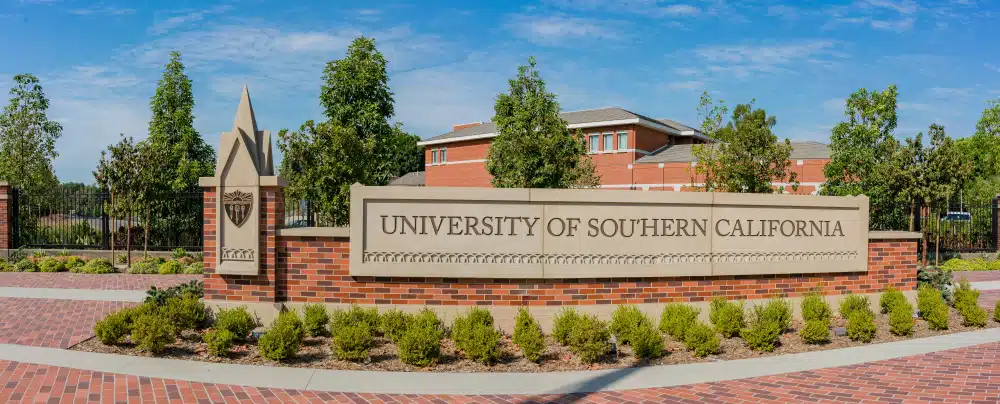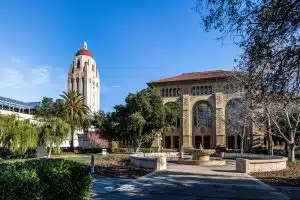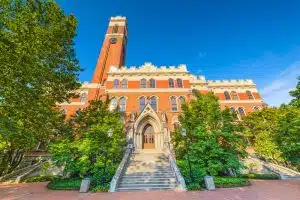Financial Aid at USC
The University of Southern California (USC) offers multiple financial aid options to help students manage their educational costs. These aid opportunities span from federal and state aid programs to institution-specific scholarships and private funding sources. Understanding these options is crucial in securing financial aid and reducing the burden of tuition.
Understanding the Basics of Financial Aid
When it comes to pursuing higher education, one of the biggest concerns for many students and their families is the cost. Fortunately, financial aid is available to help alleviate some of the financial burden. Financial aid is a form of funding that aids students in covering education-related expenses, including tuition, books, housing, and other living expenses. This crucial support offers an avenue for many students to attain their educational aspirations regardless of their financial circumstances.
Financial aid can come from various sources, including the federal government, state governments, the university, and private organizations. Each source has its own set of requirements and criteria for eligibility. The amount granted often depends on the student’s financial need, merit, or specific criteria set by the funding source.
What is Financial Aid?
Financial aid is a broad term that encompasses various forms of assistance provided to students to help them pay for their education. It is important to note that financial aid is not limited to just scholarships or grants. It can also include loans and work-study programs.
Grants and scholarships are typically termed ‘gift aid,’ as they do not require repayment. These forms of financial aid are often awarded based on merit or financial need. Scholarships, in particular, can be highly competitive and may require students to meet certain academic or extracurricular criteria.
Loans, on the other hand, need to be repaid over time with interest. While loans can be a valuable resource for students who need financial assistance, it is important to carefully consider the terms and conditions before taking on any debt. Federal loans generally have lower interest rates and more flexible repayment plans than private ones.
Another form of financial aid is the work-study program. This program offers students part-time employment opportunities on campus or in the local community to help pay for educational expenses. Work-study programs not only provide students with a source of income but also offer valuable work experience that can enhance their resumes.
Types of Financial Aid
There are several types of financial aid available to students, each with its own benefits and considerations. Understanding these different types can help students make informed decisions about their financial aid options.
Grants and scholarships are often considered the most desirable forms of financial aid, as they do not need to be repaid. Grants are typically awarded based on financial need, while scholarships are often based on merit or specific criteria set by the funding source. These forms of financial aid can significantly reduce the overall cost of education.
Loans, on the other hand, require repayment over time. While loans can provide immediate financial assistance, they also come with the responsibility of repayment. It is important for students to carefully consider their borrowing options and to understand the terms and conditions of any loans they take on.
Work-study programs offer students the opportunity to earn money while attending school. These programs provide part-time employment, usually on campus, and allow students to contribute to their educational expenses. Work-study programs can be a great way for students to gain practical work experience and develop valuable skills.
It is worth noting that financial aid packages can often be a combination of different types of aid. For example, a student may receive a combination of grants, scholarships, and loans to meet their financial needs. It is important for students to carefully review and understand the details of their financial aid packages to make informed decisions about their education.
Overall, financial aid plays a crucial role in helping students achieve their educational goals. Whether through grants, scholarships, loans, or work-study programs, financial aid provides students with the necessary resources to pursue higher education. It is important for students to explore and understand their financial aid options to make informed decisions about their education and future.
Federal Student Aid at USC
At the University of Southern California (USC), they understand that pursuing a higher education can be a significant financial commitment. That’s why they offer various options for federal student aid to help make your education more affordable and accessible. Whether you’re a U.S. citizen or an eligible noncitizen, we encourage you to explore the opportunities available to you.
Applying for Federal Student Aid
One of the first steps in accessing federal student aid is completing the Free Application for Federal Student Aid (FAFSA). This comprehensive application collects information about your income and assets, as well as your parents’, if applicable, to determine your financial need. USC utilizes this information to create a customized financial aid package tailored to your specific circumstances.
It’s important to note that applying for federal aid early is highly advisable. Some federal aid programs, such as the Federal Work-Study program and certain types of federal grants, are awarded on a first-come, first-served basis. By submitting your FAFSA as soon as possible, you increase your chances of securing these valuable opportunities.
Our dedicated financial aid advisors are available to guide you through the application process and answer any questions you may have. We understand that navigating the world of financial aid can be overwhelming, and they are here to provide the support you need.
Eligibility Criteria for Federal Aid
While federal aid can be a tremendous resource, it’s essential to understand the eligibility criteria to determine if you qualify. To be eligible for federal aid at USC, you must meet the following requirements:
- Be a U.S. citizen or an eligible non-citizen
- Be enrolled or accepted for enrollment as a regular student in an eligible degree or certificate program
- Maintain satisfactory academic progress
Additionally, male students must be registered with the Selective Service. This requirement ensures that all eligible individuals fulfill their obligations to the nation.
Financial need, as determined by the FAFSA, is also a significant factor in determining eligibility for most types of federal student aid. USC recognizes that each student’s financial situation is unique, and they take this into account when evaluating your eligibility for federal aid.
Our commitment to providing access to education extends beyond federal aid. They offer a range of scholarships, grants, and work-study opportunities to help you fund your education. Their goal is to ensure that financial barriers do not hinder your ability to pursue your academic and career aspirations.
At USC, they believe that investing in your education is an investment in your future. They are dedicated to supporting you throughout your academic journey and empowering you to achieve your goals. Explore the federal aid options available to you and take the first step towards a brighter future.
State-Based Financial Aid for USC Students
Attending college can be a significant financial investment, but there are various state-based financial aid programs available to help ease the burden for students at the University of Southern California (USC). These programs are designed to assist students in pursuing their higher education goals by providing financial support based on their residency and financial need.
California Grant Programs
For California residents, there are several state grant programs that can help make attending USC more affordable. One of the most well-known programs is the Cal Grant. This need-based grant is available to low and middle-income Californian students who demonstrate financial need. It provides financial assistance that can be used towards tuition, fees, and other educational expenses.
In addition to the Cal Grant, there is also the Middle-Class Scholarship. This program specifically targets middle-class families with gross incomes up to $184,000 and assets up to $184,000. It aims to bridge the financial gap for families who may not qualify for traditional need-based aid but still require assistance to afford the cost of attending USC.
Non-Resident State Aid Opportunities
While state-based financial aid programs primarily cater to residents, non-resident USC students may also have access to aid opportunities from their home states. Many states offer what are known as ‘portable’ aid programs, which means that students can carry their financial aid benefits with them to out-of-state schools like USC.
It is crucial for non-resident students to research the aid opportunities available in their home states. By doing so, they can gain a clear understanding of their options and potentially tap into additional sources of financial support. These aid programs may vary in eligibility criteria and award amounts, so thorough research is essential to maximize the benefits.
Furthermore, some states have reciprocal agreements with California, allowing their residents to receive financial aid benefits similar to those offered to California residents. This reciprocity can significantly expand the pool of financial aid options for non-resident USC students.
Overall, state-based financial aid programs provide valuable resources for USC students, both residents and non-residents alike. These programs aim to make higher education more accessible and affordable, ensuring that students can focus on their academic pursuits without excessive financial stress. It is essential for students to explore all available avenues of financial aid to make the most informed decisions regarding their education and future.
USC’s Institutional Financial Aid
When it comes to financing your education at the University of Southern California (USC), you’ll be pleased to know that there are various options available to help ease the financial burden. USC offers a range of scholarships and grants to its students, ensuring that financial constraints do not hinder their academic pursuits.
USC’s Scholarships and Grants
One of the primary sources of financial aid at USC is the wide array of scholarships and grants that the university offers. These include both merit-based and need-based options, ensuring that students from all backgrounds have access to financial assistance.
Among the notable scholarships offered by USC is the Trustee Scholarship, which is considered the most prestigious scholarship at the university. This highly competitive scholarship is awarded to exceptional students who have demonstrated outstanding academic achievement, leadership skills, and a commitment to their community.
In addition to the Trustee Scholarship, USC provides a need-based University Grant to eligible students. This grant is designed to bridge the gap between the cost of attendance and the financial resources available to students and their families.
Furthermore, USC offers several other scholarships and grants that students can apply for through the USC Financial Aid Office. These opportunities provide financial support to students across various disciplines and areas of study.
It is also worth noting that individual USC schools and departments have their own unique scholarships tailored to students in specific fields. These scholarships are designed to encourage and support students pursuing specialized areas of study, ensuring that they have the necessary resources to excel in their chosen fields.
Work-Study Programs at USC
Aside from scholarships and grants, USC also provides work-study programs to help students meet their educational expenses. These programs offer part-time employment opportunities to both undergraduate and graduate students, allowing them to earn money while gaining valuable work experience.
USC’s work-study programs are needs-based, meaning that students who demonstrate financial need are given priority. By participating in these programs, students not only have the opportunity to earn money to contribute towards their educational costs but also gain practical experience in their field of interest. This experience can be invaluable in terms of building a strong resume and developing essential skills that will benefit them in their future careers.
Whether it’s through scholarships, grants, or work-study programs, USC is committed to ensuring that financial barriers do not hinder students from pursuing their educational goals. The university’s comprehensive financial aid offerings provide students with the necessary support to thrive academically and achieve their full potential.
Private Scholarships and Grants for USC Students
Searching for Private Scholarships
Private scholarships are another excellent way of financing your USC education. Various organizations, institutions, and individuals offer these scholarships based on a variety of eligibility criteria.
Students can use scholarship search engines, community organizations, and high school guidance counselors to find these opportunities. It’s important to apply to these scholarships early as competition can be quite high.
Applying for Private Grants
Similar to scholarships, private grants are non-repayable funds awarded by various organizations. Some are needs-based, while others are merit-based or targeted toward specific student groups.
Again, the key to success when applying for private grants is thorough research and timely application. The USC Financial Aid Office can guide students in identifying and applying for these resources.
Understanding the different financial aid options at USC is the first step to securing funding for your education. Remember, every bit of aid can help reduce the financial pressure and enable you to focus on your studies. So, reflect on your needs, research your options, and apply early and widely for financial aid.
How AdmissionSight Can Help You with College Admissions
AdmissionSight is a college consulting firm that provides personalized assistance to students throughout the college admissions process. Here are some ways that AdmissionSight can help you:
Admissions strategy: AdmissionSight can help you develop a strategic plan for your college application process. Our professional consultants can assist with identifying schools that are a good fit for your academic, extracurricular, and personal goals and help you plan and prioritize your application strategy.
Application review: AdmissionSight can review your application and provide feedback on how to improve it. We can offer suggestions on making your application stand out and highlighting your strengths and unique qualities.
Essay coaching: AdmissionSight can help you craft compelling essays that showcase your personality, goals, and achievements. We can guide you through the essay writing process and provide feedback on your drafts to help you refine your writing.
Interview preparation: AdmissionSight can provide interview coaching to help you feel confident and prepared for college interviews. Our experts can offer tips on how to present yourself professionally and how to answer common interview questions.
Extracurricular planning: AdmissionSight can help you plan and develop your extracurricular activities to make them more impactful and meaningful. We can suggest activities that align with your interests and goals and provide guidance on demonstrating your leadership and initiative.
Overall, AdmissionSight can provide valuable guidance and support throughout the college admissions process to help you maximize your chances of getting accepted into the college of your choice.
With a high success rate of over 75%, we have built a strong network in the past decade. Book an initial consultation today, free of charge!









































